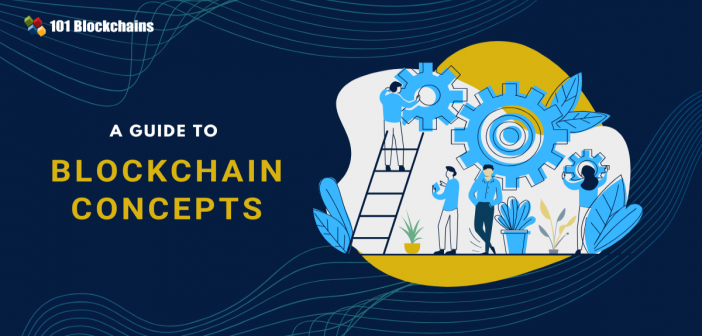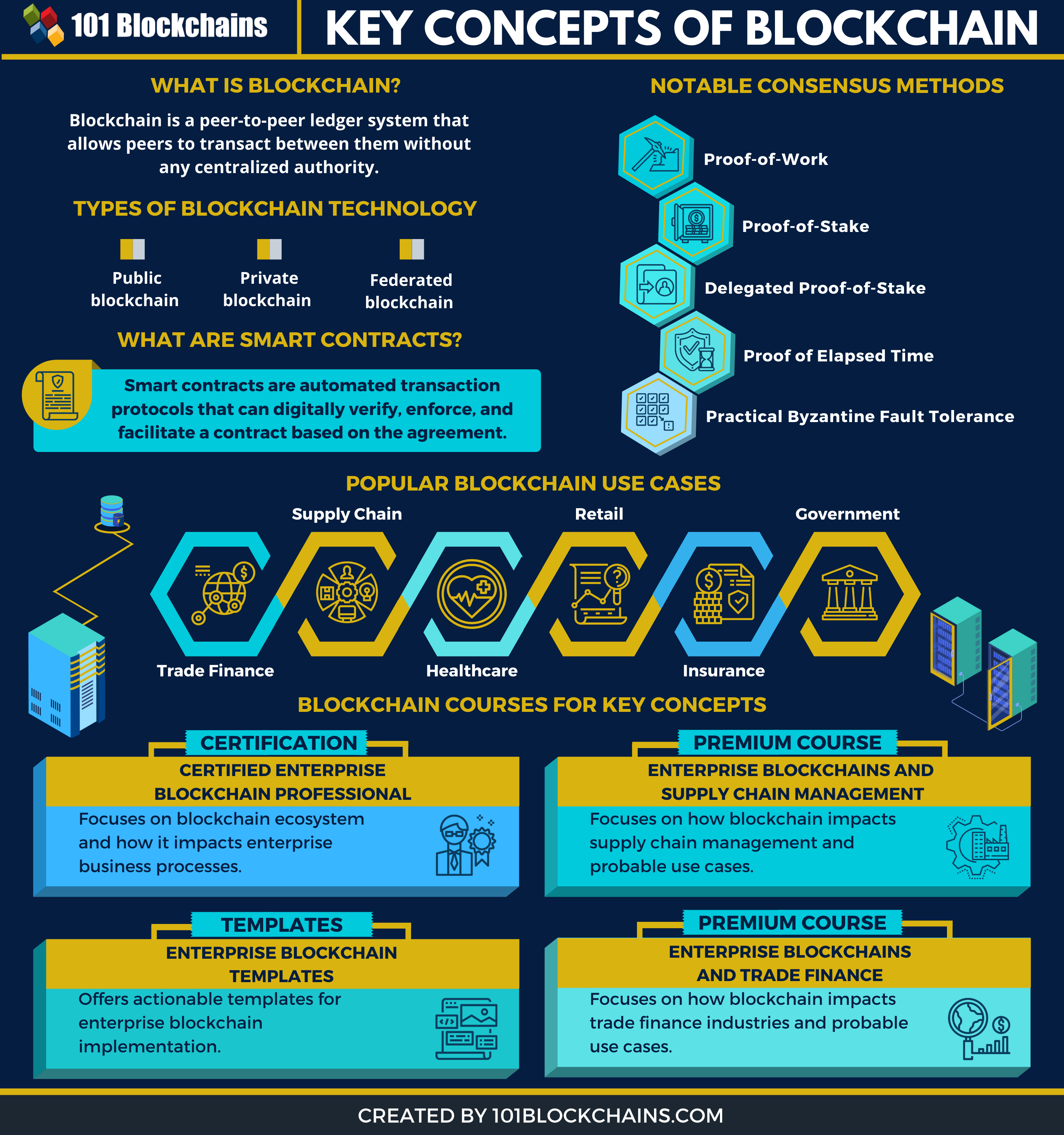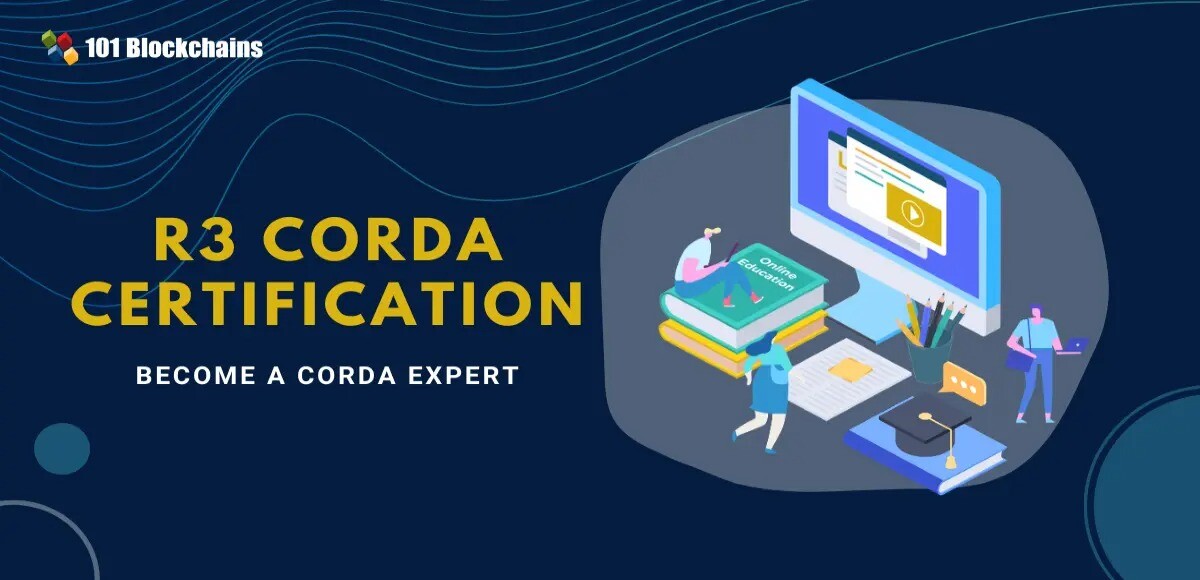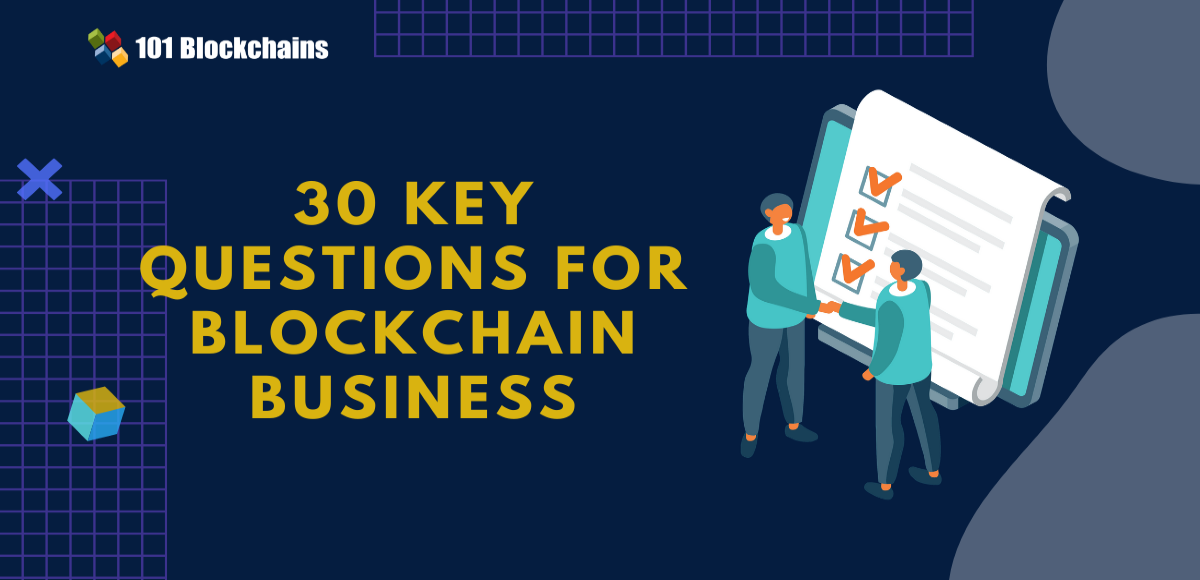Learn how blockchain truly works, master key definitions, and uncover what makes smart contracts so "smart." Dive into the fundamentals, gain valuable insights, and start your blockchain journey today!

- Opinions
Hasib Anwar
- on June 14, 2021
Blockchain Concepts You Should Know About
Understanding blockchain concepts can be very tricky as the technology is relatively sophisticated. Therefore, you must use a viable source to learn about the key blockchain concepts. You must be wondering what kind of blockchain concepts am I talking about? Well, here, by blockchain concepts, I mean the core elements that make blockchain what it is. In reality, for a much deeper understanding of blockchain technology, you need to explore the underlying contexts – how it works, what key features it has, different types, etc.
Therefore, to help you out, I’ll cover everything in this guide. More so, you’ll get a context of the characteristics of blockchain, which will help you understand the blockchain digital transformation better as well. So, let’s not waste any more time and check out the blockchain concepts you should know about.
Build your identity as a certified blockchain expert with 101 Blockchains’ Blockchain Certifications designed to provide enhanced career prospects.
What Is Blockchain Technology?
At the very start, let’s clear up one of the common blockchain concepts that many of you are confused about. So, what is blockchain technology? Well, in reality, blockchain technology is a distributed ledger system, which comes with decentralization, greater transparency, security, immutability, and many more. So, instead of any centralized model, it focuses on a new decentralized environment to promote fairness.
In reality, it’s actually quite an intelligent technology that can replace any existing system and increase the overall efficiency of a network. Anyhow, this is one of the key blockchain concepts that you may be confused about. Furthermore, blockchain is going to disrupt the world very soon (already disrupted a lot of industries). Thus, learning about blockchain concepts is the best thing you can do right now.
Get familiar with the terms related to blockchain with Blockchain Basics Flashcards.
How Does a Blockchain Work?
Blockchain actually follows a straightforward working process. And this is one of the blockchain concepts you should know about. So, let’s see how it works. First of all, a user on the network would request for a transaction. Next, to represent the transaction, a block gets created with transaction information, and the block gets broadcasted throughout the system to other nodes. Nodes are users or devices that the user on the network will use to get into the system.
Anyhow, once that happens, all the nodes verify the contents of the block. Without proper verification, anyone can misuse the network. So, it’s necessary to check them beforehand. More so, there are various ways to verify them without any illegal means. I’ll talk about them in a bit in this learning about blockchain concepts later on.
Anyhow, if the information is valid, then the block gets verified; if not, it gets disapproved. After the validation process, the block is added to the ledger. So, once all of that is out of the way, the transaction is executed.
Key Features of Blockchain Technology
In reality, there are six basic key features of blockchain technology. More so, this is also one of the key blockchain concepts you need to check out before using the technology. These are –
- Immutability: Here, it means that no one can alter any kind of entry in the ledger once you add them. However, it varies based on the type of blockchain technology.
- Decentralization: In reality, it means that there is no central authority in the platform.
- High Level of Security: Blockchain offers a greater level of security compared to other platforms.
- Distributed Ledger: In reality, it means that the main ledger is distributed among all the nodes, and they have to maintain it.
- Consensus Algorithms: These are protocols the network uses to verify transactions.
- Fast Settlement/Transaction: It does offer a fast transaction speed compared to traditional banks.
Anyhow, let’s check out the blockchain concepts you should know about.
Please include attribution to 101blockchains.com with this graphic. <a href='https://101blockchains.com/blockchain-infographics/'> <img src='https://101blockchains.com/wp-content/uploads/2020/06/blockchain-concepts.png' alt='blockchain concepts='0' /> </a>
Different Types of Blockchain Technology for Enterprises
This is another one of the key blockchain concepts. More so, there are different types of blockchain technology for enterprises. In reality, each class offers a different set of features and issues. Thus, you need to understand their underlying structure to incorporate them into enterprise environments better.
General Classification
-
Private Blockchain
Private blockchains are really a lifesaver for enterprise companies. Furthermore, here you get a lot of new features that you won’t get in public ones.
Special Features
- A single organization can authorize access to the network
- Read or Write access varies from node to node
- Faster output
- Can use any asset on the network
- Does not offer anonymity
- Cheaper compared to the public blockchain
Why Should You Use This?
- Saves a lot of costs
- Offers lower transaction fees
- Network regulations
- No criminal access
-
Public Blockchain
A public blockchain is more suited for an open environment where you need it for the consumers. Therefore, it’s important that you know where to use this blockchain concept. But this blockchain concept is more secure than private ones.
Special Features
- Everyone has access to the network
- Can download and add nodes
- Fully decentralized
- Slower output
- Offers anonymity
Why Should You Use This?
- Greater transparency
- Truly decentralized structure
- User empowerment
- Immutability
-
Federated Blockchain
In reality, federated platforms are actually perfect for enterprise companies. Here, multiple companies can co-exist in the network and work together, still maintaining their privacy. Therefore, you can use this blockchain concept to implement your blockchain solutions.
Special Features
- Multiple organizations can authorize access to the network
- Extremely faster output
- Highly scalable
- Energy efficient
- Distributed authority
Why Should You Use This?
- Preserves privacy
- Power-efficient compared to the public blockchain
- Less volatile network
Start your blockchain journey Now with the Enterprise Blockchains Fundamentals
Permission-Based Classification
-
Permissioned Blockchain
In reality, permissioned blockchain can be both private and public. More so, the internal system will greatly vary from network to network.
Special Features
- Decentralization varies from network to network
- Only nodes with proper authority can enter the network
- Some nodes have more influence and can participate in a consensus
- Relatively faster
- Trusted environment
Why Should You Use This?
- More power for the nodes
- Open privacy level for everyone
- Free participation in voting or consensus
-
Permissionless Blockchain
In reality, permissioned blockchain can be both private and public. More so, typically, it’s decentralized, but you can impose restrictions on these platforms too.
Special Features
- Usually decentralized
- Every node is free to participate in a consensus
- Trust-free environment
- Relatively slower
Why Should You Use This?
- Suited for organizations
- Transaction rates are low
- Isn’t required to have a native asset
Not sure how to build your career in enterprise blockchains? Enroll Now in How to Build Your Career in Enterprise Blockchains Course
Key Blockchain Concepts: Smart Contracts and Consensus Algorithms
Smart contracts and Consensus Protocols are two of the most important elements of blockchain technology. Furthermore, every blockchain needs to have a consensus protocol for reaching an agreement between nodes.
What Are Smart Contracts?
Smart Contracts are digital contracts where a user can set up pre-determined rules. More so, once the pre-determined rules are executed, all the participants in the contract get their share of payment or assets. Thus, the whole process is automated.
Also, once a user meets with the specified rules of the contract, the smart contract will automatically release the payment. In reality, this is one of the important blockchain concepts you should know about.
Curious to understand the complete smart contract development lifecycle? Enroll now in Smart Contracts Development Course Now!
What Is Consensus Algorithm?
In reality, consensus algorithms are a form of an algorithm that helps the nodes within a blockchain network to reach an agreement over the validation process of a transaction.
Furthermore, these are at the very core of the blockchain infrastructure. So, without consensus, the system can’t be fully transparent or error-free.
What Are the Different Types of Consensus Algorithms?
There are various types of consensus algorithms. There are –
- Proof-of-Work
- Delayed Proof-of-Work
- Proof-of-Stake
- Delegated Proof-of-Stake
- Leased Proof-Of-Stake
- Proof of Stake Velocity
- Proof of Elapsed Time
- Practical Byzantine Fault Tolerance
- Simplified Byzantine Fault Tolerance
- Delegated Byzantine Fault Tolerance
- Federated Byzantine Agreement
- Directed Acyclic Graphs
- Proof-of-Activity
- Proof-of-Authority
- Proof-of-Reputation
- Proof of History
- Proof-of-Importance
- Proof-of-Capacity
- Proof-of-Burn
- Proof-of-Weight
- Proof-of-Time
These are the key blockchain concepts you should know about, and it will help in your journey ahead.
Learning Blockchain Concepts: The Enterprise Blockchains
Enterprise blockchains are a vital part of blockchain adoption. In reality, without specific platforms geared for this sector, blockchain can’t reach international standards. Thus, to clear these basics of blockchain, let’s get into what the enterprise blockchain is and what platforms are ruling the marketplace at the moment.
What Are Enterprise Blockchain Platforms?
Enterprise blockchains are special types of blockchain platforms that are optimized, especially for enterprise-grade usage. Furthermore, these platforms are equipped with the necessary features needed for any organization to pull off the enormous workload every day.
Develop your career as a Blockchain Consultant. Start your Blockchain Consultant Learning Path today!
5 Enterprise Blockchain Players for You
At present, there are multiple enterprise blockchain platforms. Anyhow, all these platforms offer their version of blockchain technology for enterprises with a high level of customizations.
There are five main platforms. These are –
-
Hyperledger
Hyperledger is currently in the top five among the enterprise blockchain platforms. Furthermore, many companies are using this enterprise blockchain for their solutions. Also, the Linux Foundation hosted this project, and they offer open-source platforms for cross-industry use cases.
Features
- Permissioned Blockchain System
- High Scalability with Greater Performance
- Need-To-Know Data Availability
- Rich Queries Languages
- Modular Architecture
- Safety Measurement for Sensitive Data
Want to learn the basic and advanced concepts of Blockchain and Hyperledger Fabric? Enroll Now: Getting Started with Hyperledger Fabric
-
Enterprise Ethereum Alliance
Enterprise Ethereum Alliance is another top tier among enterprise blockchain platforms. More so, this one offers a private version of the Ethereum platform for enterprise usage. At present, they have over 1400 individuals working on the solutions.
Features
- Open Platform
- Operational Authority
- Provide Governing Support for Enterprise Development
- Evolve from the Existing Public Platform
- Utilizing Standards
Want to learn the fundamentals of ethereum development? Enroll now in Ethereum Development Fundamentals Course
-
R3 Corda
R3’s Corda is more suited for financial sectors. However, the company is expanding its solutions to incorporate more industries such as Government, Healthcare, Energy, Global Trade, Telecommunications, etc.
Features
- The application firewall of blockchain
- Operational governance model
- Disaster monitoring and recovery
- High node performance
- Support for Oracle and SQL server databases.
Want to learn the basic and advanced concepts of R3 Corda Development? Enroll Now: Beginner’s Guide to Corda Development
-
Ripple
In reality, Ripple offers two strong features – high level of safety measures and advanced security protocols. More so, it’s more suited for financial enterprises. Also, their RippleNet provides almost free transactions anywhere around the world.
Features
- Expanding to new marketplaces
- Ensure more customers
- Advanced security protocols
- Simplifying the process of payments
-
Quorum
In reality, Quorum uses Ethereum as the underlying technology for this platform. Anyhow, the major difference is that Quorum is permissioned, whereas Ethereum is public and more geared towards organizations. Furthermore, this is a blockchain concept that many of you seem to confuse yourselves with.
Features
- Node managing authority
- Private transactions
- Agreement through voting
- High-end performance
Start learning Blockchain with World’s first Blockchain Skill Paths with quality resources tailored by industry experts Now!
Blockchain Concept Explained: What Are the Popular Use Cases?
Global Transactions
- Fast cross-border payment
- Efficient transactions
- Low costing
Trading
- Control for manufacturers
- Trust and transparency in trading
- Reduced costing and paperwork
Food Safety
- No food fraudulence
- Accountability in the food supply
- Low amount of food wastage
Supply Chain
- Tracking every product
- Visibility and security in the supply chain
- Detection of corruption with accurate information
Retail
- Tracks all luxury goods
- Fights off counterfeit issue
- Reduces product theft
Governmental Services
- Preserves citizen rights
- Promotes exponential economy growth
- Digitizes citizen identification
Intellectual Property
- Payments for patented work
- Patents and trademarks intellectual properties
- Reduces intellectual property abuse
Healthcare
- Tracks patient information
- Streamlines multiple test results in parallel
- Stops counterfeit drug issue
Oil and Gas
- Promotes accuracy and saves revenue
- Efficient shipment routes
- Secured auditing and freight payment
Real Estate
- Fractional ownership of properties
- Reduces property costs
- Increases scalability
Humanitarianism
- Full visibility in donations
- Corruption free environment
- Promotes trust and fairness
Insurance
- Less paperwork
- Fast insurance checks and claims
- No customer exploits
Media and Entertainment
- Better value for artists
- Good paycheck for the artists
- Efficient marketing on the social platform
Travel
- Accurate passenger processing
- Cross border identification
- Accurate flight schedules
Blockchain Concept Explained: Difference Between Centralized and Decentralized Network
Blockchain is not only changing the enterprises but also the infrastructure of the internet. In reality, the internet is fully centralized. More so, social media or Google searches were myths twenty years ago. Thus, it’s evident that the internet needs an upgrade, and blockchain is the key to that.
Centralized System
- Uses a client-server model
- Authoritative access that controls the output
- Prone to single point failure
- No privacy for user data
- Third-party interference
- Mass adoption
Decentralized System
- Uses a peer-to-peer model
- No authoritative access
- More secured, no single point of failure
- Higher privacy for enterprises and users
- Gets rid of third-party interference
- Transparent data
- In the early phase of adoption
Let’s see the implementation problems in this “what is the blockchain concept” guide.
Implementation Issues of This Tech: Blockchain Concept Explained
Now that you know about the fundamentals of blockchain, it’s time for you to know about the implementation challenges as well. In reality, the adoption challenges are separated into two categories – Technological Factors and Human Factors.
Human Factors
- Inefficient technological design of the blockchain projects
- Also, not enough supply of proper skill set for blockchain adoption
- More so, the majority of the public doesn’t know what the technology is or understands what it can do.
- Anonymity can attract criminals on the platform
- There’s a significant lack of regulations on the network
Technological Factors
-
The performance lacks in many ways so far
- Also, most blockchains use energy-consuming consensus algorithms
- The public ledger system does not offer full privacy for the companies
- In reality, there are some security concerns even though the technology boasts about it
- Furthermore, blockchain is still not capable of handling mass users in their system, and it increases the scalability problem.
Curious to learn about blockchain implementation and strategy for managing your blockchain projects? Enroll Now in Blockchain Technology – Implementation And Strategy Course!
Use These Blockchain Courses to Learn About the Blockchain Concepts
-
Certified Enterprise Blockchain Professional
Course Overview
Want to learn about the basics of blockchain? In reality, this is one of our premium courses that offers everything you need to know about the fundamentals of blockchain. And so, if you want to study the technology, learn how it works you need to use this course. Furthermore, this course will offer you ways that you can implement your very own solution and understand the full transformation at ease.
What Modules Does It Have?
Part-1: Blockchain Technology Basics
Here, we will start with the fundamentals of blockchain. Furthermore, we will cover how blocks are created, using smart contracts, how consensus protocols work, different types of blockchain, and so on.
Part-2: Enterprise Blockchain Platforms
Mainly, you will learn the basics of blockchain technology with these enterprise blockchain platforms. In reality, we’ll cover the three major ones – Corda, Ethereum, and Hyperledger Fabric.
Part-3: Blockchain In Trade Finance
You want to learn how blockchain is affecting the trade finance sector? Well, don’t worry because, in this part, we will tell you just how. In reality, this part will contain the process of trade finance, crypto-assets definition, cryptocurrency definition, a detailed overview or Ripple, and so on.
This platform really will offer full disclosure, and you can get the blockchain concept explained here as well.
Part-4: Blockchain Applications in Major Businesses
Blockchain transforming businesses is not new at the moment. But if you don’t know how it’s doing it, then you are in trouble. So, in this part, we will dive into the supply chain management sector. Therefore, you will understand how it’s working here and what are the probable use cases.
Part-5: Blockchain Use Cases
This is fairly straight forward. In reality, this part will teach you how you can use it in different scenarios.
Enterprise Blockchains and Supply Chain Management
Course Overview
Want to learn about the basics of blockchain in enterprise blockchains and supply chain management? In reality, this is one of our premium courses that offers everything you need to know about the fundamentals of blockchain in the supply chain. And so, if you want to study the technology, learn how to integrate it into the system, then check out this course now! Also, this course will offer you ways that you can implement your very own solution in a supply chain focused industry.
What Modules Does It Have?
Part-1: Fundamentals of Supply Chain Management Process
In this part, we will teach you the full process of supply chain along with what kind of responsibilities you will face in a similar career opportunity.
Part-2: Value Formation in SCM
But how will you know what kind of value your company is offering and how much you need it? So, for that, we will cover how you can estimate your value with the working capital. More so, you will learn to use the EVA model for evaluating your SCM system. Also, we will cover a relationship graph between the working capital and the SCM process.
Part-3: Supply Chain Blockchain Examples
In reality, this part will contain the impact of blockchain in the supply chain and offer lucrative use case options with live examples of it.
Part-4: Developing a Supply Chain Project
Furthermore, you will learn exactly how you can develop the solution in a guiding manner. Let’s see the next big course for you in this “what is the blockchain concept” guide.
Enterprise Blockchains and Trade Finance
Course Overview
Want to learn about the basics of blockchain in enterprise blockchains and trade finance? But for that, you need to study the industry itself, learn how the process works, and then use this course for your blockchain project. Also, this course will offer you ways that you can implement your very own solution in the trade finance industry.
What Modules Does It Have?
Part-1: Working Process of The Trade Finance Industry
In this part, we will teach you the full process of trade finance along with what kind of problems you will face in a similar career opportunity.
Part-2: Blockchains Affect in Trade Finance
In reality, how can you know about the live initiatives in this sector or even about the models as well? So, for that, we will cover how you can couple trade finance with blockchain. More so, you will learn to use different blockchain solutions for your trade solution too.
Part-3: Key Parts of Trade Finance
In reality, this part will contain the key parts of trade and how blockchain will impact them. For example, we will cover the Letter of Credit (LC), Bill of Lading (BoL), and Cross border payments.
Part-4: Trade Finance Applications with Blockchain
Want to see some live examples of it? Well, learn about Marco Polo, Contour, We. Trade and TradeLens with use in this part.
Part-5: Developments in Blockchain-Based Trade Finance
You know there are some major developments in this sector too. For example, you need to know about TradeTrust and Digital Standards Initiative. Let’s see the next big course for you in this “what is the blockchain concept” guide.
Enterprise Blockchains Templates
Course Overview
Want to clear your confusion on “what is the blockchain concept” using lucrative blockchain templates? But for that, you need to study them and learn to use them properly. So, we are here with a complete course and a wide collection of templates to help you out as well.
Also, this course will offer you ways to improve your presentation and know where to use this tech in a better way.
What Templates Will You Get?
- Do you need a blockchain?
- Blockchain Project Readiness
- Presenting an Enterprise Blockchain Project
- Mapping Supply Chain Business Vs. Enterprise Blockchain
Start learning Blockchain with World’s first Blockchain Career Paths with quality resources tailored by industry experts Now!
In the End
I tried to cover all the basic blockchain concepts that you can understand simply in this guide. So, if you are more interested in getting into deeper, then make sure to use our wide collection of blockchain courses.
Not only the blockchain concept is explained there, but you will also know a lot about other perspectives as well. In reality, coupling businesses with this technology can actually make our world a much more efficient place.





![Future of Blockchain: Predictions for 2022 [UPDATED] future of blockchain predictions](https://101blockchains.com/wp-content/uploads/2020/12/future-of-blockchain-predictions.png)

